Catalog
Search
246 products
View:
- Selected: 1Areas of use
- Selected: 0Item names
- Selected: 0Manufacturer
- Selected: 0Made in
- Selected: 0Additional
View:
246 products
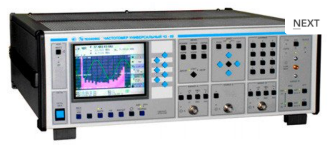
Universal frequency meter Ch3-89
The frequency meter is able to work both independently and as part of automated measuring systems with interfaces such as USB or RS-232.
Technical specifications
Frequency and period of sinusoidal signals (inputs A, B) 0.001 Hz - 150 MHz
Frequency of video pulse signals (inputs A, B) 0.001 Hz - 100 MHz
Frequency of continuous sinusoidal oscillations (input C) (0.1 - 1) GHz
Frequency of continuous sinusoidal oscillations (input D) (1 - 37.5) GHz
Carrier frequency of a continuous signal with frequency modulation (FM) (input D) Fh = (1 - 18) GHz, Fm = 100 Hz-100 kHz; frequency deviation from 10 kHz to 10 MHz
Carrier frequency of a continuous signal with amplitude modulation (AM) (input D) Fh = (1 - 18) GHz, Fm = 100 Hz - 100 kHz; AM factor up to 100%
Carrier frequency of a continuous radio pulse sequence (IM) signal (input D) Fn = (1-37.5) GHz, from 0.15 microseconds to 1ms, Fsl from 100 Hz to 3 MHz, from 2 to 103
Pulse duration 10 ns – 0.1 s
Time interval from -10 to 10 s
The duration of the front, the decay of the pulses is 5 ns - 100 microseconds
Phase difference of two synchronous sinusoidal signals from minus 360° to 360°
The measurement error of the phase difference of two synchronous sinusoidal signals is ± 0.36° (from 1 kHz to 1 MHz) ± 3.6° (above 1 MHz)
Input signal level:
•for sinusoidal signal (inputs A, B) (0.03 - 7.0) V
•for video pulse signal (inputs A, B) (0.1 - 10.0) V
•for a sinusoidal signal (input C) (0.03 - 1.0) V
•for sinusoidal and IM signals (input D) 10 MW (from 1 to 8 GHz); 40 MW (sv. 8 to 18 GHz); 50 MW (sv. 18 to 37.5 GHz).
The nominal frequency value of the reference quartz oscillator is 10 MHz
Relative error in the frequency of the quartz oscillator, no more than ± 2x10-7 in 12 months
Operating temperature range from 5 to 40 °C
AC power supply 220 V, 50 Hz
Power consumption, no more than 100 VhA
Overall dimensions, mm 496x174x459
Weight, not more than 16 kg
TEKHNOYAKS
Moscow
Produced in: Moscow
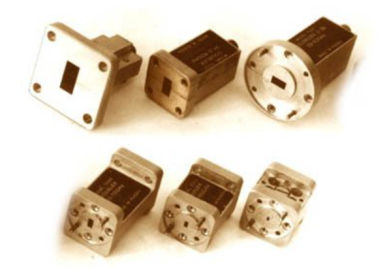
UCHX3-53
Basic properties:
Wide frequency range;
Sufficiently large output power;
High level of suppression of side harmonics of the input signal;
Low phase noise value;
Relatively simple technical solutions:
- synchronization and frequency stabilization,
- stabilization and adjustment of the output power level,
- implementation of amplitude and frequency modulation modes;
Do not require external bias diodes.
Operating conditions:
Operating temperature range from minus 10 to 50 °C;
The relative humidity of the air is up to 98% at a temperature of 25 ° C.
Technical characteristics
Input/output frequency range, GHz 12,50- 17,86 / 37,50- 53,57
Losses (max.), dB 17
Input power level, 15-20 dBm
Unevenness of output power (Rvh. = 20 dBm), dB ± 2.0
The level of parasitic harmonics of the input signal at the output (min.), dBn 20
Output VSWR (max.) 2.0
Connector type:
• Input Coax. 3.5/1.5 mm (socket)
• Output Waveguide 5,2x2,6 mm
Overall dimensions, mm 34x20x20
Weight, g 60
TEKHNOYAKS
Moscow
Produced in: Moscow
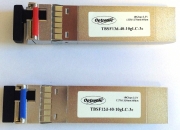
SFP+ WDM Transceiver
SFP+ modules are used to organize high-speed duplex channels with data transfer rates up to 10 Gbit/s. WDM SFP+ optical transceivers are designed to organize a duplex communication channel in a single fiber. CWDM SFP+ allows you to organize 10 Gbit/s channels in passive CWDM systems.
FTI-Optronik
Saint Petersburg
Produced in: Saint Petersburg
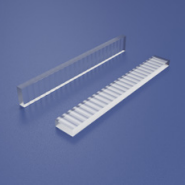
SAC500 lenses
Technical specifications
Material: S-TIH53 (Ohara)
Length, mm: 5.8±0.02
Height, mm: 1.5±0.02
Thickness, mm: 0.55±0.01
Refractive index, mm: 1.823 Pitch, mm: 0.5
Radius, mm: 1.49
Effective focal length, mm: 1.81
Back focal length, mm: 1.5 Transmission, %: >99.5 Antireflection coating, nm at one of the wavelengths from the range: 400-1500
Numerical aperture: 0.09
Surface quality at λ = 633 nm% λ/4
Residual deviation in the full angle FW1/e2 (for non-linear deviation of the laser diode), mrad: 90.0
INZHEKT
Saratov
Produced in: Saratov
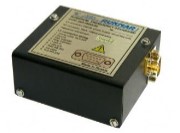
Rubidium frequency standard H1-1022
Rubidium frequency standards H1-1022 are available both in the standard version and with various options that have differences in functionality and technical characteristics:
option 01 is a device with high short–term stability of the output signal frequency;
option 02 – a device with a low-level phase noise in the output signal spectrum;
option 03 – the device has a binding module in its composition, which allows automatic correction of the frequency of the output signal according to the signal of the external time scale;
option 04 – the device has a synthesizer module in its composition, which allows you to receive a sinusoidal signal of a given frequency at the output of the device in the range from 100 Hz to 100 MHz in steps of the order of 4 × 10-6 Hz;
option 05 is a device with an extended range of ambient operating temperatures.
Through the built-in RS-232 interface, telemetry information is collected from the device nodes, and commands to change the frequency of the output signal are transmitted.
The H1-1022 frequency standards have no domestic analogues in terms of their small dimensions, weight, power consumption and operating time, as well as in terms of their numerous functional capabilities.
Ruknar
Nizhny Novgorod
Produced in: Nizhny Novgorod

WDM Media Converters 100Base FX (single fiber
A single-fiber converter 100base-FX, single-mode WDM, acSC connector, working distance from 20 to 80 km.
The output optical power of the transmitter is -13~ -6 dBm, the sensitivity of the receiver is 36 dBm.
Delivery of the product is possible in two versions:
Media converters without DIP switch.
Media converters that support the LFP (Link Fault Pass Through) (LLCF/LLR) function using the DIP switch.
The LLCF/LLR function allows you to instantly receive information when communication problems occur and provide an effective solution for monitoring the network with the possibility of automatic redundancy. The DIP switch disables or enables the use of the LFP function.
FTI-Optronik
Saint Petersburg
Produced in: Saint Petersburg
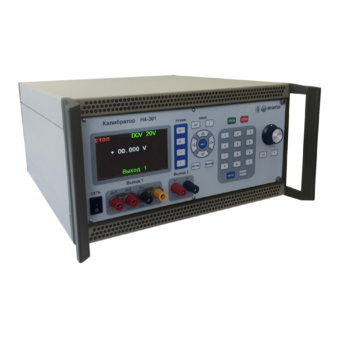
Universal calibrator H4-301
Technical specifications:
Voltage reproduction range Uk 200 mV 0.07 + 0.01
DC: from 50 MV to 600 V, Uk 2 V 0.05 + 0.005
sub-bands (Uk) 200 mV; 2; 20; 200; 600 V Uk 20 V 0.05 + 0.005
Basic error, ± (% of U + % of Uk): Uk 200 V 0.07 + 0.01
Uk 600 V 0.1 + 0.02
Voltage reproduction range UK 200 mV 0.2 + 0.05
AC: from 1 mV to 600 V, Uk 2; 20 V 0.15 + 0.02
sub-bands (Uk) 200 mV; 2; 20; 200; 600 V from 20 Hz to 20 kHz
Basic error, ± (% of U + % of Uk): sv. 20 to 40 kHz 0.2 + 0.1
Uk 200 V; 600 V:
from 40 Hz to 1 kHz 0.2 + 0.05
Power reproduction range Ik 200 Ma 0.1 + 0.02
DC: from 1 Ma to 5 A, Ik 2; 20; 200 mA 0.1 + 0.01
sub-bands (Ik) 200 Ma; 2; 20; 200 mA; 2; 5 A Ik 2 A; 5 A 0.1 + 0.02
Basic error, ± (% of I + % of Ic):
AC power reproduction range: from 10 Ma to 5 A
sub-bands (Ic) 200 Ma; 2; 20; 200 mA; 2; 5 A 0.15 + 0.05
Frequency range from 20 Hz to 1 kHz
Basic error, ± (% of I + % of Ic):
USB interface
Operating temperature range from minus 10 °C to + 50 °C
Dimensions; weight 420×342×184.5 mm; 10 kg
MNIPI
Minsk
Produced in: Belarus, Minsk
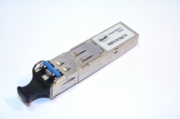
Optical Transceiver SFP LC /Gigabit Ethernet/SD-TTL (1.25Gbps)
Optical transceivers are in standard SFP metal cases with separate optical input/output for LC type connectors to transmit the signal over two optical fibres
FTI-Optronik
Saint Petersburg
Produced in: Saint Petersburg
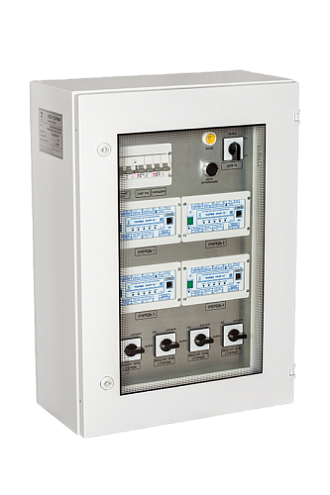
FREQUENCY UNLOADING CABINET "PARMA SHE ACR"
The following options can be implemented on request:
•additional time relays - allow you to time load control commands within one queue
•output of ACR/CHAPV signals on one bus: the appearance of a signal - ACR, the disappearance of a signal - CHAPV
•installation of a panel measuring device on the cabinet door
•manufacture of cabinets of other dimensions, design and number of unloading queues
•manufacture of outdoor cabinets
PARMA
Saint Petersburg
Produced in: Saint Petersburg
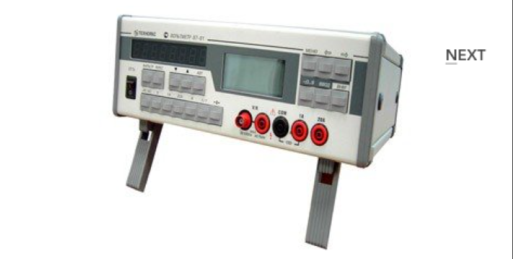
Universal voltmeter V7-81
The voltmeter is capable of operating both independently and as part of automated measuring systems with RS-232 type interfaces.
Technical specifications
Ranges of measurement of electrical quantities:
- constant electrical voltage from 10 MV to 1000 V
- SCR of alternating electric voltage in the frequency range from 10 Hz to 10 MHz (AC) from 1 mV to 750 V
- DC current from 0.1 µA to 20 A
- SCR of alternating electric current in the frequency range from 10 Hz to 5 kHz from 10 µA to 20 A
- electrical resistance from 10 mOhm to 1 GOm
- frequency of the measured alternating electric voltage from 10 Hz to 1 MHz
Measurement errors of electrical quantities:
- constant electrical voltage ± (0.0028 - 20)%
- SCR of alternating electric voltage in the frequency range from 10 Hz to 10 MHz (AC) ± (0.09 - 15)%
- DC power ± (0.012 - 20)%
- SCR of alternating electric current in the frequency range from 10 Hz to 5 kHz ± (0.11 - 2.35) %
- electrical resistance ± (0.007 - 5.5)%
- frequency of the measured alternating electric voltage ± (0.1 -10.1)%
General characteristics:
Operating temperature range from 5 to 40 °C
AC power supply 220 V, 50 Hz
Power consumption, no more than 20 VA
Overall dimensions, mm 291x110x308
Weight, not more than 4.5 kg
TEKHNOYAKS
Moscow
Produced in: Moscow
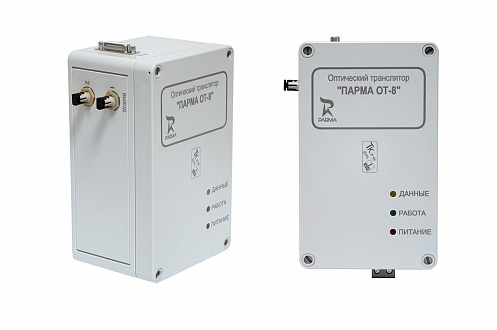
OPTICAL REPEATER PARMA OT-8
Purpose and functions:
· Transmission of accurate time signals via the IRIG-B protocol to remote subscribers via optical communication channels up to 1 km
· Retransmission of signals to several channels, thereby ensuring the connection of one to eight devices to one time server
PARMA
Saint Petersburg
Produced in: Saint Petersburg
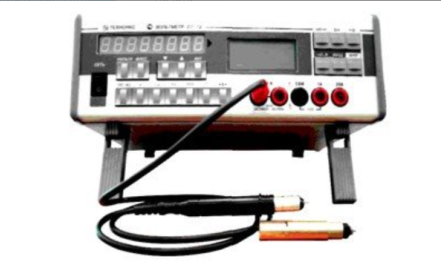
Universal voltmeter V7-79
The voltmeter is capable of operating both independently and as part of automated measuring systems with RS-232 interfaces.
Technical specifications
Measuring ranges of electrical quantities:
- constant electrical voltage from 10 MV to 1000 V
- SCR of alternating electric voltage in the frequency range from 10 Hz to 10 MHz (AC) from 1 mV to 750 V
- RF RF AC voltage in the frequency range from 10 kHz to 1500 MHz (RF) from 10 mV to 1000 V
- DC electric current from 0.1 µA to 20 A
- SCZ of alternating electric current in the frequency range from 10 Hz to 5 kHz from 10 µA to 20 A
- electrical resistance from 10 mOhm to 1 GOm
- frequency of the measured AC voltage from 10 Hz to 1 MHz
Measurement errors of electrical quantities:
- constant electrical voltage ± (0.0028 - 20)%
- SCR of alternating electric voltage in the frequency range from 10 Hz to 10 MHz (AC) ± (0.09 - 15)%
- RF RF AC voltage in the frequency range from 10 kHz to 1500 MHz (RF) ± (1.6 - 66)%
- DC current ± (0.012 - 20)%
- SCR of alternating electric current in the frequency range from 10 Hz to 5 kHz ± (0.11 - 2.35)%
- electrical resistance ± (0.007 - 5.5) %
- frequency of the measured alternating electric voltage ± (0.1 -10.1) %
General characteristics:
Operating temperature range from 5 to 40 °C
AC power supply 220 V, 50 Hz
Power consumption, no more than 20 VA
Overall dimensions, mm 291x110x308
Weight, not more than 4.5 kg
TEKHNOYAKS
Moscow
Produced in: Moscow
